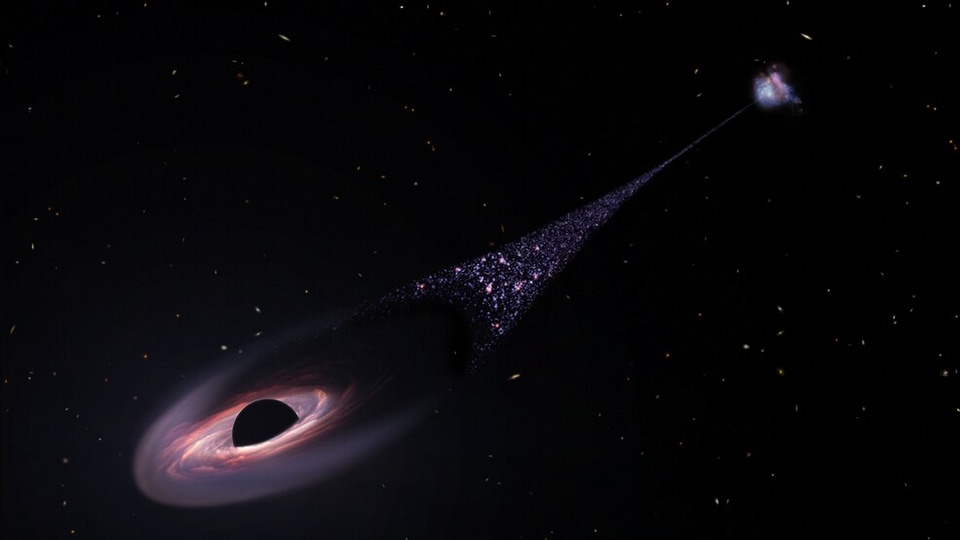NASA Hubble Space Telescope finds a MONSTER black hole weighing as much as 20 million Suns
NASA Hubble Space Telescope has captured a strange runaway black hole weighing as much as 20 million Suns. Here is all you need to know.

There are several giant objects floating in space. From massive planets to enormous asteroids and more. But they all pale in comparison to the latest NASA find. The NASA Hubble Space Telescope has detected a 'monster' runaway black hole. Amazingly, NASA has also stated that if the black hole was in our solar system, it could travel from Earth to the Moon in 14 minutes. The supermassive black hole also weighs as much as 20 million Suns. The strange part about this discovery is the unusual movement pattern of the black hole and the fact that it is forcing star formations instead of eating them.
"There's an invisible monster on the loose, barreling through intergalactic space so fast that if it were in our solar system, it could travel from Earth to the Moon in 14 minutes. This supermassive black hole, weighing as much as 20 million Suns, has left behind a never-before-seen 200,000-light-year-long "contrail" of newborn stars, twice the diameter of our Milky Way galaxy. It's likely the result of a rare, bizarre game of galactic billiards among three massive black holes," NASA said in a statement.
NASA finds a runaway black hole
The US space agency further stated that, rather than gobbling up stars ahead of it, like a cosmic Pac-Man, the speedy black hole is plowing into gas in front of it to trigger new star formation along a narrow corridor. The black hole is streaking too fast to take time for a snack. Nothing like it has ever been seen before, but it was captured accidentally by NASA's Hubble Space Telescope.
"We think we're seeing a wake behind the black hole where the gas cools and is able to form stars. So, we're looking at star formation trailing the black hole," said Pieter van Dokkum of Yale University in New Haven, Connecticut. "What we're seeing is the aftermath. Like the wake behind a ship we're seeing the wake behind the black hole." The trail must have lots of new stars, given that it is almost half as bright as the host galaxy it is linked to.
The black hole lies at one end of the column, which stretches back to its parent galaxy. There is a remarkably bright knot of ionized oxygen at the outermost tip of the column. Researchers believe gas is probably being shocked and heated from the motion of the black hole hitting the gas, or it could be radiation from an accretion disk around the black hole.
Catch all the Latest Tech News, Mobile News, Laptop News, Gaming news, Wearables News , How To News, also keep up with us on Whatsapp channel,Twitter, Facebook, Google News, and Instagram. For our latest videos, subscribe to our YouTube channel.































